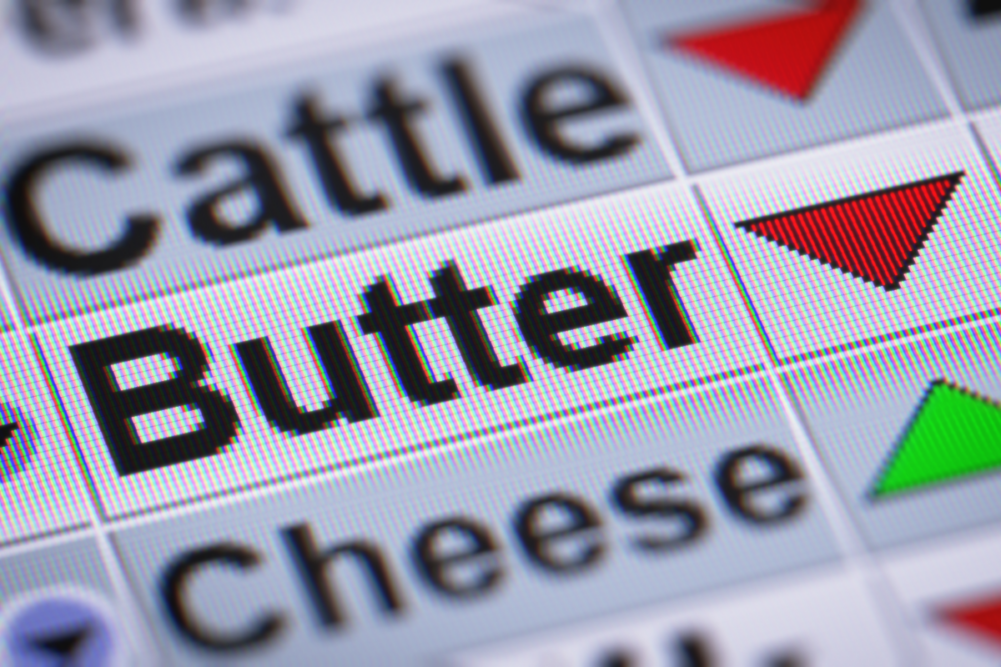KANSAS CITY — The US butter market is shifting from a period of abundance to scarcity, but this isn’t a story about logistics, shipping delays or pandemic impacts. This is a good old fashioned supply story. High feed costs earlier this year, and rising costs for nearly everything else, have pushed margins lower for dairy farmers. They have reacted by reducing the size of the dairy herd by 85,000 head, which is almost 1%, between May and September. The reduced milk production is resulting in less butter production and we’re drawing inventories lower, which is pushing butter prices higher, and they likely have even more upside in 2022.
Most of the “balancing” of the milk supply falls to butter and milk powders like nonfat dry milk (NFDM). Milk production is very seasonal, peaking in the spring and falling in the summer before bottoming out in the autumn and starting to rise again. But dairy consumption patterns don’t line up with the season increases and decreases in milk production. To ensure we have enough milk around in the summer months, we effectively overproduce in other months. That excess milk gets turned into storable dairy products like cheese, butter and milk powders which can then be used when milk production dips down.
Partly to deal with these seasonal swings in milk production, dairy farmers banded together in cooperatives who would pool the milk from multiple farms and sell it to commercial processors. To give themselves more bargaining power, and deal with any surplus milk that they couldn’t sell, some cooperatives built their own plants that could turn the milk into something storable. Since butter/NFDM has a long shelf life, and because the US government was willing to buy a nearly unlimited about of these products under their price support program, cooperatives tended to invest heavily in butter/NFDM plants. So, when there is a surplus of milk, it tends to get directed to butter, and when milk production is weak, butter production really suffers.
Cream on the rise
On top of the weak milk production we’re also seeing good demand for cream going into other dairy products and uses. There is a certain amount of fat available at the farm gate. Milk going into a bottle (Class I) gets first draw on the supply, followed by soft dairy products like yogurt and ice cream (Class II), then whatever fat is left will go toward cheese and butter. There are a number of new expansions at cheese plants, and a very large new cheese plant, that have come online in the past year. There are few things worse for profitability than running plants well below capacity, so these cheese plants are pulling in a significant amount of milk and putting the fat into cheese. That reduces the amount of fat that is left for butter.
The situation was reversed a year ago. Weak foodservice sales were limiting cheese demand, which consequently lead to weaker cheese production and the fat was pushed into butter. Retail butter demand was strong as consumers did that pandemic baking thing, but weak butter movement into foodservice constrained total butter demand and the strong production pushed inventories to their highest levels since 1993. That kept US butter prices relatively weak in the second half of 2020 and the first half of 2021. But as milk production growth has slowed and cheese production has stayed strong, butter production has dropped below last year and inventories stood 4% below year ago levels in September. Butter stocks are likely to be 20-30% below year ago levels in late 2021 and through the first half of 2022. That should support higher butter prices next year.
The bearish risk is that cheese production is running ahead of cheese demand. While butter stocks are being drawn down, cheese stocks are on the heavy side, up 7.7% from last year in September. It’s possible cheese plants could decide running below capacity makes more sense than producing extra cheese that they may have to sell at a loss. If the cheese makers cut production, the milk will end up in butter. But overall, the risks are weighted toward the upside for butter prices in 2022.





